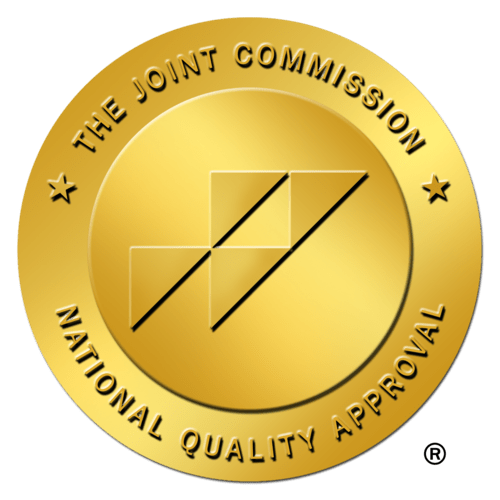
Delivering high quality patient care is at the heart of each decision made for your facility. Keeping pace with both the future of healthcare and the evolving needs of your patient population involve approaching patient care with strategic objectives and a commitment to acting with intention. Those objectives include workforce planning, especially as the healthcare community continues to battle the pandemic in the midst of a nursing shortage.
Part of considering the most impactful healthcare staffing trends of 2022 for your facility includes assessing past performance in recruiting, training, engaging, supporting, and retaining its workforce. From frontline clinicians who manage multiple components of care to behind the scenes team members who help keep the revenue cycle turning, it’s crucial for your facility to proactively create a workplace culture where professionals can thrive.
The American Hospital Association’s recent 2022 Health Care Talent Scan provides facilities with a thorough look at best practices to cultivate such a culture. It explores four core goals to help facility leaders tackle changing workforce needs and challenges:
- resilience
- workforce flexibility
- capacity
- strategy
Let’s dive into these goals and what they mean for the future success of your facility and its workforce.
Facility goal #1: Resilience
According to the report, focusing on creating and nurturing a “robust healthcare workforce to promote well-being, mental health, and resilient staffing” is as much about increasing individual support of healthcare professionals as it is about strengthening institutional resilience. This goal prompts leaders like yourself to identify barriers to resilience and then to learn from such challenges.
The AHA recommends addressing this goal with actions such as:
- helping clinicians “recapture the joy and purpose of their work” to avoid burnout
- facilitating healing that addresses trauma and grief
- securing psychological PPE to better protect clinician resilience
- creating a team-centered culture with a focus on shared resilience
- improving strategies to address fatigue and scarce resources
Prioritizing clinician well-being is the first step to building a resilient team. Current staffing trends have travel nurses out-earning not only their nursing colleagues but also surgeons in some facilities. But working in the current landscape of COVID is likely not sustainable.
Before the pandemic, more than one-third of nurses reported burnout. Annual turnover among nurses was around 17%. Now as another surge strikes, nurse burnout is around 50%, and annual turnover of RNs is up to 30%, according to a recent study. Jane Muir, author of that research and UVA Health emergency room nurse, notes that while hospitals ramped up their initiatives to tackle nurse mental and emotional well-being when the pandemic began, “it hadn’t been a priority until it was too late.”

CareRev can help your facility address this urgent need by connecting you with a technology that identifies real-time staffing needs. Our professionals are flexible and eager to pick up shifts, allowing you to better support your internal teams with a local clinical workforce pool.
Facility goal #2: Workforce flexibility
The pandemic continues to have an undeniable impact on workplace challenges and trends.. This includes demands and roadblocks within the healthcare community. If your facility is not consistently listening to team members on how to be more flexible in innovative and impactful ways, now is the time to make that move.
One key insight from the report on growing workforce flexibility is to create a workforce management infrastructure that “supports staff needs in normal times while also enhancing their ability to perform well in times of crisis.”
CareRev provides centralized staffing support to hospitals, healthcare systems, outpatient centers, and skilled nursing facilities that allows for flexibility with patient demand. Your facility will gain access to a latent supply of local healthcare professionals such as Registered Nurses, Certified Nursing Assistants, Medical Assistants, and Surgical and Radiologic Technologists.
By relying on our professionals, you can:
- create flexibility around workload
- optimize your internal team’s delivery of patient care
- encourage a healthier work-life balance across departments

The AHA also emphasizes the need to rethink innovatively when it comes to creating a culture that prioritizes flexibility. This can include:
- optimizing resources with a variety of staffing models
- improving training that includes new technology skills to help professionals keep pace with healthcare innovations
- revising retention initiatives to include flexible scheduling
- growing access to technology for on-demand training
- leading by example when it comes to a healthy work-life balance
Facility goal #3: Capacity
Your facility has likely faced workforce capacity challenges throughout the pandemic. The healthcare industry will continue to feel the weight of the current nursing shortage as it impacts far more than scheduling. Experienced nurses will likely continue “investing a great deal of time onboarding and training newly licensed nurses, in addition to their own daily bedside care responsibilities,” according to Rhonda Thompson, DNP, CNO and Senior Vice President of Patient Care Services at Phoenix Children's Hospital.
That means to secure your access to a pipeline of highly qualified nursing professionals, your facility will need to amp up its reputation for hiring, engaging, and retaining talent. That includes innovating its current recruiting trends and practices in ways that show authentic and sustainable support for nurses and other healthcare professionals. The AHA report recommends taking steps such as:
- recognizing symptoms of persistent trauma and providing recovery aid
- empathizing with team members through trauma-informed leadership
- moving beyond eliminating stressors to a culture that adapts and focuses on well-being
- strengthening protections for clinicians when they speak up and responding quickly and transparently
- expanding your team-based initiatives throughout the facility
- supporting diverse learning styles and increasing accessibility in person and virtually

Reinforce your recruitment and engagement efforts with diverse staffing models to help your team avoid burnout, encourage more work-life balance, and build a pipeline of local professionals who are looking for flexibility.
At CareRev, our professionals provide you with a workforce that ebbs and flows with patient demand so your organization is prepared for anything. You can meet professionals where they are via a mobile experience and staff more efficiently by engaging professionals in work that suits their specialties and skill sets.
Facility goal #4: Strategy
When it comes to strategy surrounding the workforce, your facility has key goals in mind to attract and retain the best and the brightest healthcare professionals. But which practices and processes should evolve in 2022? What avenues do your professionals have to advocate for changes they need? How — and how often — are your facility's leaders including workforce voices in workforce planning?
The AHA report recommends prioritizing those voices in strategic planning to deepen your understanding of the workforce’s needs and ensure your facility is an employer of choice. Here are a few ways the AHA suggests improving your strategic planning:
- grow its commitment to diversity and inclusion through representation on governing boards, C-suites, and workforce
- take a proactive approach to decrease incivility and bullying
- cultivate a culture of joy that gives your team reasons to love their work
- encourage your team to access and use support resources
- be consistent in your support of diverse learning styles and accessibility needs
- expand teaching styles for orientations and trainings
- support clinicians as they develop a webside manner via telehealth sessions
- tailor retention strategies to the changing and diverse needs of the workforce

As your facility continues to make its mark on the future of healthcare, its leaders must drive meaningful change in how teams across the organization are supported. The pandemic has certainly disrupted the healthcare community, but it is not beyond repair.
Now is the time to take a comprehensive look at your processes and protocols, identify what is working, listen to your workforce on what is not working, and make changes that address the new normal.





